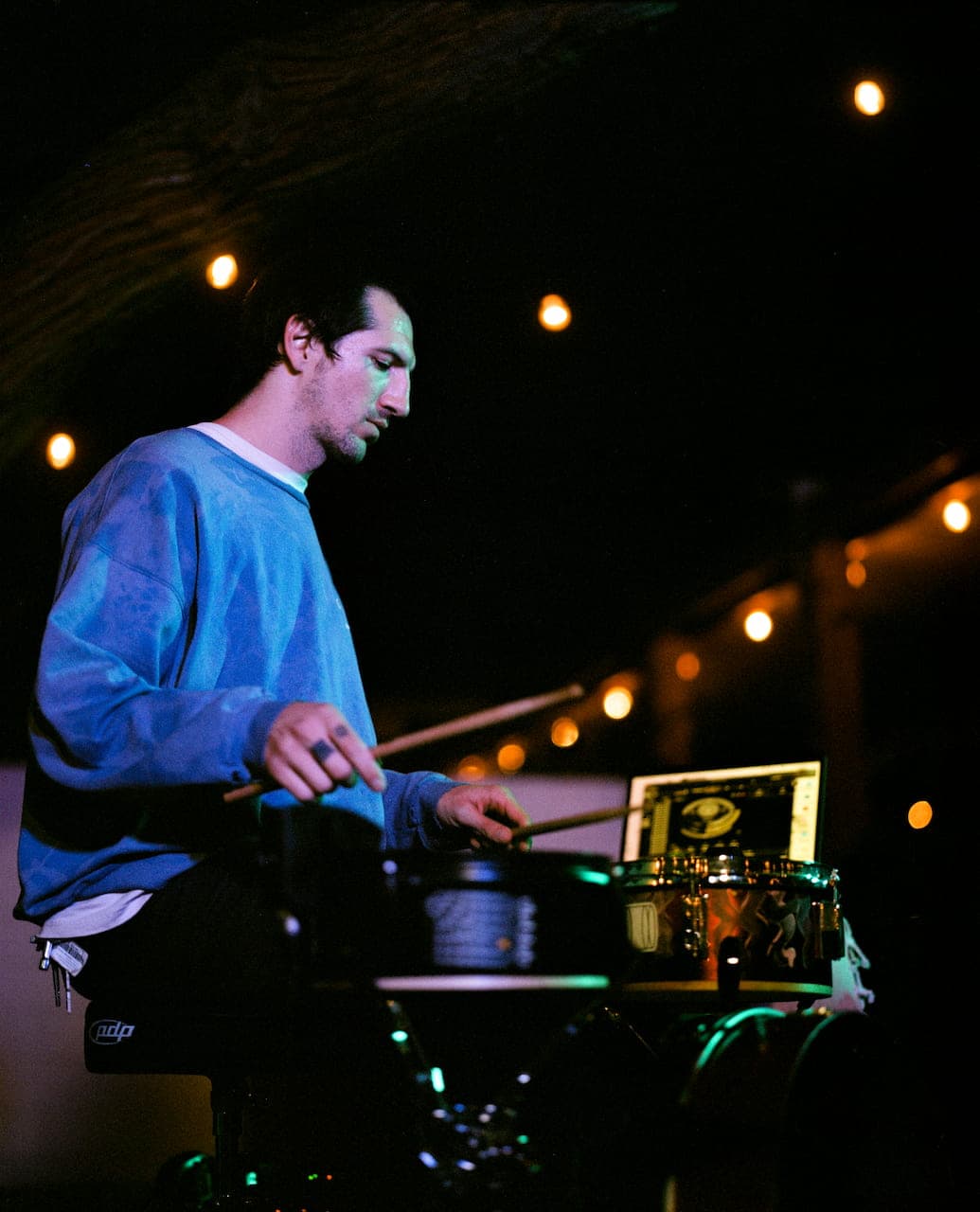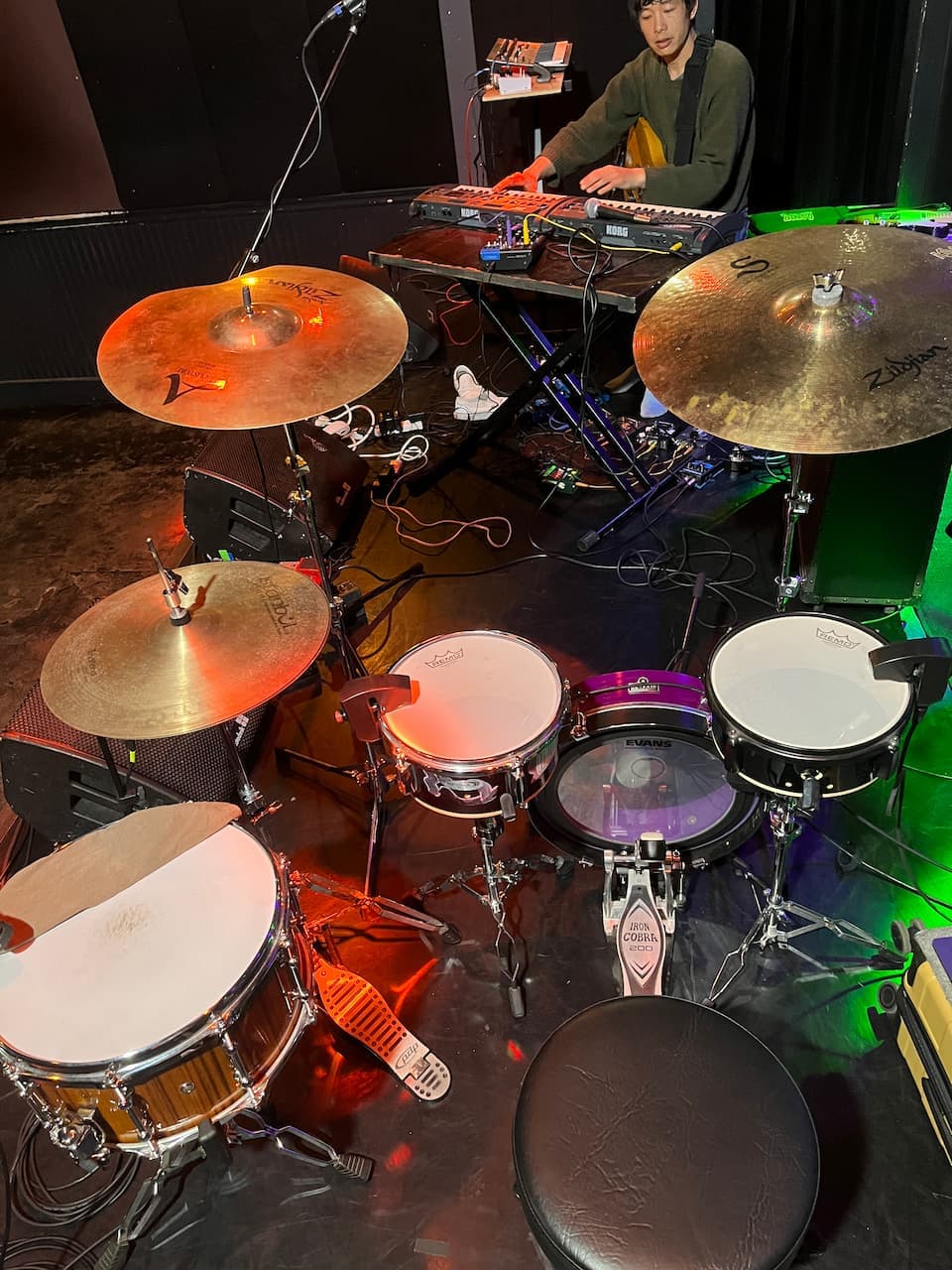
Colin Blanton AKA Brin is a sound artist and percussionist based in Los Angeles. For years, he's been using Sensory Percussion as a means to warp and manipulate samples, exploring the world of improvised sound design via percussive performance. He recently teamed up with guitarist Dustin Wong for a series of live performances, which resulted in their new release titled 'Texture II' via Leaving Records. The album is a product of these performances carefully edited, mixed, and blended with additional studio sessions. Throughout their various collaborations, the pair has developed a method of communicating through their instruments, moving seamlessly from one improvised soundscape to another without much discussion beforehand. We caught up with Brin to find out what role Sensory Percussion plays in his creative process.
What was your musical background prior to using Sensory Percussion?
I got into playing music when was around 10 years old, mostly rock stuff. Kindof the classic path of school band, marching band, and then in college I studied percussion performance and music technology. I left school and started touring with different punk bands around Birmingham, Alabama, where I'm from.
Then around 2011, I made a pretty hard switch and stopped playing in bands and really wanted to just make solo music. I got into lots of electronics, using Ableton and a 404 sampler mainly. I found out about Sensory Percussion when the Kickstarter was going on and I was like, "Woah, that seems crazy." Then as soon as it became publicly available, I started selling my modular gear and just made the full switch. Sensory is something that I was searching for for a while. I had played shows with the 404 to my left and triggers on my drums. Then when Sensory came out, I was just like "Dang, that's a way easier, more fluid way to do this without carting around a whole modular system. More freedom for where the sounds could go."
So is that what made you want to use Sensory Percussion instead of those other samplers, pads, and triggers you were using?
Yeah, the ease of use was a big factor, but I also was really just wanting to get back into the tactile nature of percussion. Growing up as a percussionist, it didn't feel very satisfying to play live sets just turning a couple knobs. I just felt like I wanted to be doing something that excites me physically and would be fun to watch. No hate to laptop sets, I love that, too, but I just need to feel like I'm doing something. It's really just the perfect marriage of electronics and playing drums.
It's also just mystifying to other people when you play it in front of them. They're usually like, "What the hell is going on? You're hitting a drum but I'm hearing a synth." It can be visually disorienting in a cool way. I kindof like that about Sensory Percussion.

Is your current setup just drums and Sensory Percussion, or do you use some other gear?
For the recordings on 'Texture II,' it was just Sensory Percussion running into a device called the Norns made by Monome, which is an effects processor that micro-samples little bits of audio. So I would mix the dry signal from Sensory Percussion with the wet signal from the Norns. They really fit together nicely.
So how would you describe the music on this album? The word 'ambient' gets thrown around for music that has no defined tempo, but sonically, this record feels a lot busier and more full than most ambient music.
The shortest way I could describe it is electronic free jazz. It's very improvisational. Dustin and I have a connection that is rare; you don't often find someone where making music with them is just the easiest thing. We don't really talk about concepts or genres or even what sounds we're going to use. We just kinda go for it and go off of being in the moment.
The title 'Texture II' is very appropriate in terms of the sonic pallette; there are tons of cool textures going on. How do you source your samples?
I've collected a huge sample library over the years, and I recorded lots of them myself. The last track on the record, "Sunset Chime," has a lot of really cool textural stuff. And those samples came from when I was camping out in the desert. I was just dropping grains of sand onto this metal jar lid and recorded them with a close mic. Then I cut that into a bunch of little 5-10 second clips. So then I'd have these longer textural samples in the background mixed with some more drum machine-style sounds in the foreground.

Once you've dropped samples into your set, how do you go about processing them inside of Sensory Percussion?
It depends on the kit, but one thing I like to do is stack samplers. Like I'll put 3-5 samples in one sampler on a certain zone and then stack a second sampler on the same zone with a different number of samples. So it creates an asymmetrical cycle where it takes a few cycles ro resolve back to the beginning. Little things like can create some cool variation.
Other than the new album, do you have anything coming up you'd like to mention?
Yes! We've got a show on August 19th at In Sheep's Clothing in Los Angeles, where we'll be playing some material from the new album.
